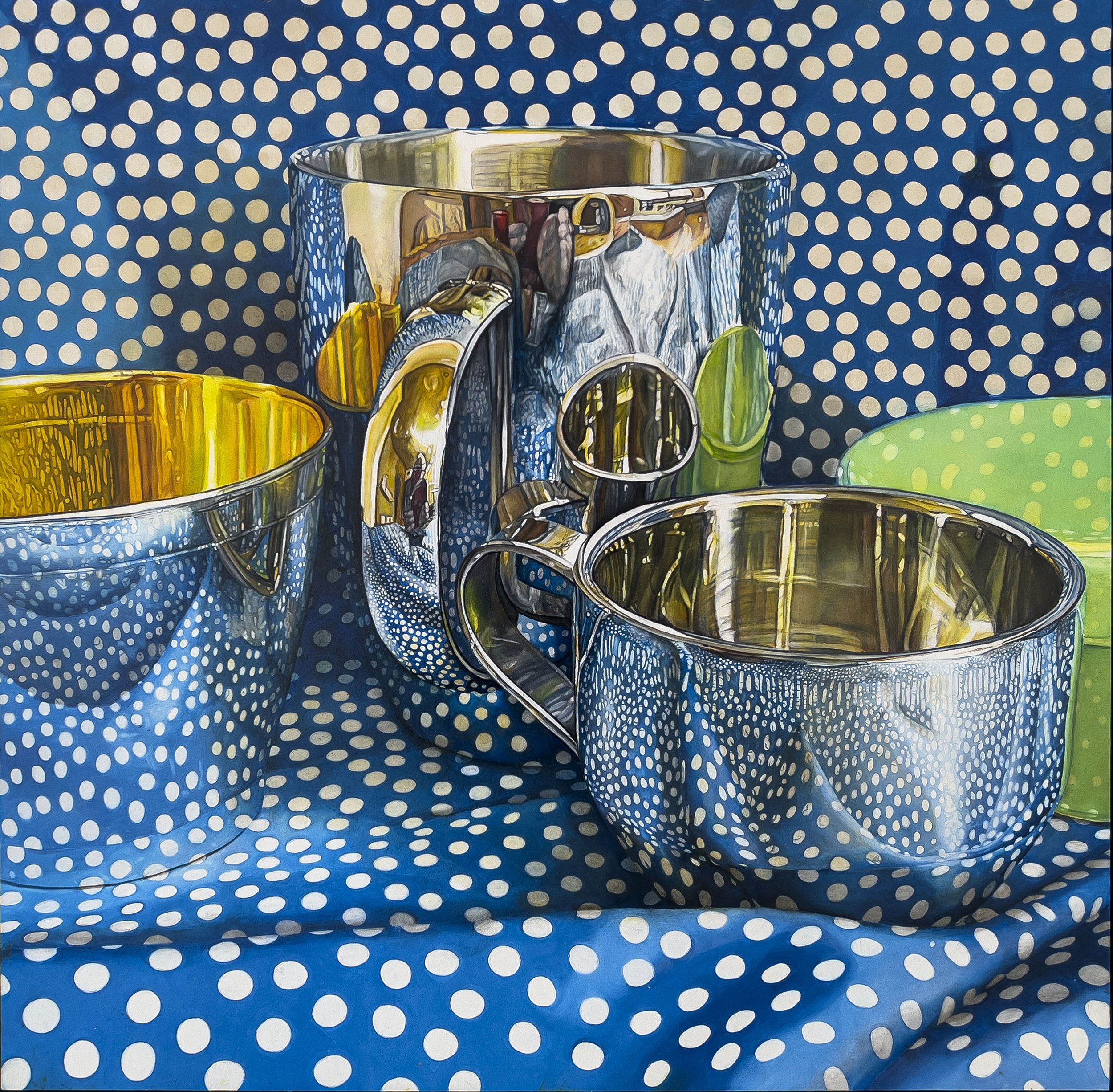Jeanette Pasin Sloan
Past Work Exhibited
Jeanette Pasin Sloan's paintings, drawings, and prints display technical feats of virtuosity. Pasin Sloan works primarily in still lifes, which she describes as, “between realism and abstraction, knowing and unknowing, and order and disorder.” Her work’s main focus is not the objects that she paints, but the reflections in the objects. These reflections take on their own life, subverting both genre and style, infusing the traditional genre of still life painting with highly abstract tendencies. Closely-cropped, and set in carefully manipulated compositions, the subject matter of Pasin Sloan's work takes second stage to its formal intensity. Pasin Sloan’s work seeks to depict a world of harmony and order, despite the knowledge of chaos.
Pasin Sloan is meticulous when it comes to planning her work and cites it as, “highly designed.” She spends “weeks, and months,” at a time planning compositions in her head before she arranges it in real life. Using the natural light that comes into her studio, Pasin Sloan takes numerous photographs of her compositions, each with a slightly different angle and view. Using these photographs, Pasin Sloan synthesizes her work, hunting for the patterns she envisioned in her mind for weeks, before transferring them to her canvas, bringing her vision to life.
Jeanette Pasin Sloan was born in Chicago in 1946. She graduated from Marymount College, Tarrytown, New York, and received an MFA in graphic arts from the University of Chicago. In 1977, Pasin Sloan began a long relationship with Landfall Press in Chicago, which she cites as “the most significant thing to happen [to her] as an artist.” Since then, Pasin Sloan has become an artist of both national and international regard having her work featured in prestigious institutions such as the Metropolitan Museum of Art in New York and the Smithsonian in Washington D.C.
Selected Collections: Metropolitan Museum of Art; Art Institute of Chicago; Cleveland Museum of Art, Federal Reserve Board, Washington, D.C.; Fogg Art Museum, Harvard University; Indianapolis Museum of Art; Milwaukee Art Museum; Minneapolis Institute of Art; Smithsonian American Art Museum; National Gallery of Art, Washington, D.C.; among others.
Jeanette Pasin Sloan








